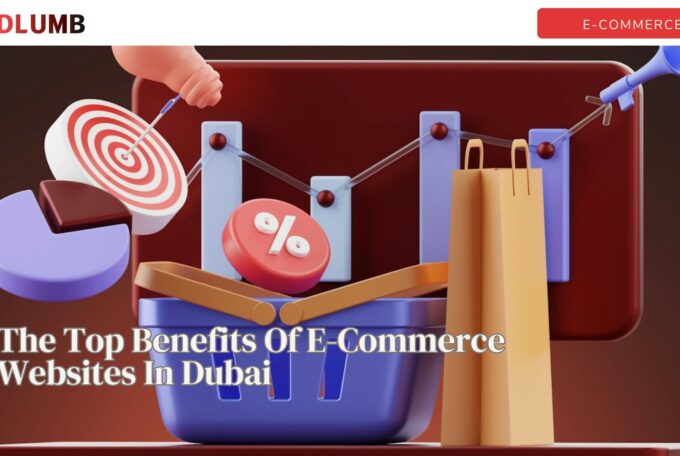Conversion Rate Optimization is the process of increasing the percentage of website visitors who take a desired action. In simple terms, it’s about getting more of your existing traffic to do what you want them to do, whether that’s making a purchase, signing up for your email list, or adding items to their cart.
Think of it this way: if 100 people visit your store and only 2 make a purchase, your conversion rate is 2%. CRO is all about turning that 2% into 3%, 4%, or even higher, without spending an extra dollar on advertising.
[su_list class=”story-highlight”]Key Takeaways
- CRO maximizes your existing traffic investment by helping you get more sales from visitors you’ve already paid to attract, making it more cost-effective than simply buying more traffic.
- Small improvements create massive results, as increasing your conversion rate from 2% to 3% means 50% more sales from the same number of visitors.
- Success comes from testing, not guessing, through systematic A/B testing of one change at a time based on data and customer feedback, not hunches or copying competitors.[/su_list]
[su_service title=”How We Can Help?” icon=”icon: info-circle” icon_color=”#000″ size=”20″ class=”InfoBox”]Ready to turn more clicks into customers? REDLUMB’s expert PPC and conversion optimization specialists can help you maximize every visitor’s potential and grow your e-commerce revenue faster.[/su_service]

Why CRO Matters for Your Bottom Line
Here’s what makes CRO so powerful:
- It maximizes your existing investment. You’re already paying for ads, SEO, and marketing to bring people to your store. CRO ensures you’re getting the most value from every visitor you’ve already paid to attract.
- It’s more cost-effective than just getting more traffic. Doubling your traffic costs money. Doubling your conversion rate? That’s often free or low-cost, involving smart changes to your website.
- The impact compounds over time. Every improvement you make to your conversion rate affects every future visitor. It’s a gift that keeps on giving.
[su_service title=”Info” icon=”icon: info-circle” icon_color=”#000″ size=”20″ class=”InfoBox”]Let’s say you’re currently getting 10,000 monthly visitors with a 2% conversion rate, that’s 200 sales. If you improve your conversion rate to just 3%, you’re now getting 300 sales from the same traffic. That’s a 50% increase in revenue without spending more on ads![/su_service]
How To Calculate Your Conversion Rate
The formula is really simple:
Conversion Rate = (Number of Conversions ÷ Total Visitors) × 100
For example, if 5,000 people visited your store last month and 150 made a purchase:
(150 ÷ 5,000) × 100 = 3% conversion rate
Most e-commerce stores see conversion rates between 1% and 4%, though this varies widely by industry, product type, and traffic source.
The Key Elements Of Conversion Rate Optimization
The CRO is a systematic approach that requires attention to several aspects. These include:
1. Understanding Your Visitors
Before you can optimize anything, you need to understand who’s visiting your site and what they’re doing. This means looking at analytics to see where visitors are coming from, which pages they visit, where they spend time, and most importantly, where they leave without buying.
Pay attention to your bounce rate (people who leave immediately) and cart abandonment rate (people who add items but don’t complete checkout). These metrics tell you where your conversion funnel is leaking.
2. Identifying Problems & Opportunities
Smart CRO starts with finding out what’s stopping people from converting. Common culprits include confusing navigation, slow loading times, unclear product information, complicated checkout processes, hidden costs that surprise customers, and a lack of trust signals like security badges or customer reviews.
Tools like heatmaps show you where people click and scroll. Session recordings let you watch (anonymously) how real visitors interact with your site. Customer surveys and feedback can reveal frustrations you never knew existed.
3. Creating Hypotheses
Once you’ve identified potential problems, you form hypotheses, which are educated guesses about what changes might improve conversions. A good hypothesis follows this format: “If we change X, then Y will happen, because Z.”
For example: “If we add customer reviews to product pages, then conversion rates will increase, because shoppers need social proof before making purchase decisions.”
4. Testing Your Changes
This is where many store owners make mistakes. They change multiple things at once and can’t tell what actually worked. The gold standard is A/B testing, where you show the original version to half your visitors and the new version to the other half, then measure which performs better.
You might test different headlines, product images, call-to-action buttons, page layouts, pricing displays, or checkout flows. The key is changing one thing at a time, so you know what made the difference.
5. Analyzing Results & Implementing Winners
After running a test long enough to get meaningful data (usually at least a few weeks and several hundred conversions), you analyze the results. If the new version wins, you implement it permanently. If it doesn’t, you learn from it and try something else.
[su_service title=”Important” icon=”icon: exclamation-triangle” icon_color=”#00ae27″ size=”20″ class=”ImportntBox”]CRO is an ongoing process, not a one-time fix. The best e-commerce stores are constantly testing and improving.[/su_service]
Proven CRO Strategies That Work
Here are specific tactics that consistently improve conversion rates:
- Simplify your checkout process. Every extra step or form field you remove can significantly reduce cart abandonment. Consider offering guest checkout instead of forcing account creation.
- Use high-quality product images. Show your products from multiple angles. Let customers zoom in. If possible, include videos showing the product in use. People can’t touch or try your products online, so images need to do the heavy lifting.
- Write compelling product descriptions. Go beyond listing features, explain benefits. How will this product make the customer’s life better? Answer common questions before they’re asked.
- Display social proof prominently. Customer reviews, ratings, testimonials, and user-generated photos all increase trust. Showing “1,247 people bought this last month” creates urgency and validation.
- Be transparent about costs. Unexpected shipping costs are the number one reason people abandon carts. Show shipping costs early or offer free shipping (and build the cost into your prices).
- Optimize for mobile. More than half of e-commerce traffic comes from mobile devices. If your site isn’t mobile-friendly, you’re losing sales daily. Make sure buttons are easy to tap, text is readable without zooming, and checkout works smoothly on small screens.
- Create urgency without being manipulative. Limited-time offers, low-stock warnings, and countdown timers can motivate purchases, but only if they’re genuine.
- Improve site speed. Every second of loading time costs you conversions. Aim for pages that load in under three seconds. Compress images, minimize code, and consider a content delivery network.
- Make your call-to-action buttons stand out. Use contrasting colors, clear text like “Add to Cart” or “Buy Now,” and make them large enough to find easily.
- Offer multiple payment options. Some customers prefer credit cards, others want PayPal, and many now expect Apple Pay or Google Pay. The more payment options you offer, the fewer customers you’ll lose at the final step.

Common CRO Mistakes To Avoid
Even with good intentions, your optimization strategies are very easy to go wrong:
- Testing without enough data.: Calling a winner after 50 visitors isn’t statistically valid. Be patient and let tests run until you have meaningful sample sizes.
- Copying competitors blindly: What works for them might not work for you. Your audience, products, and brand are unique. Test everything for yourself.
- Ignoring qualitative feedback: Numbers tell you what is happening, but customer feedback tells you why. You must use both wisely.
- Making changes without testing: Your gut feeling isn’t always right. Test major changes before rolling them out to everyone.
- Optimizing the wrong metrics: Don’t just chase clicks if those clicks don’t lead to sales. Focus on metrics that actually impact revenue.
How To Get Started?
Start by installing Google Analytics if you haven’t already. Look at your current conversion rate and identify your biggest drop-off points. Talk to customers who’ve purchased recently and ask about their experience. Look for customers who abandoned carts and find out why.
Pick one high-impact problem to solve first. Form a hypothesis, create a variation, and test it. If you need help implementing technical changes or rebuilding your site with conversion optimization in mind, professional e-commerce development services in the UAE can provide the expertise to transform your insights into action. Start with changes that are easy to implement but potentially high-impact, like improving product images or simplifying checkout.
Remember that CRO is a marathon, not a sprint. Small improvements add up over time. A store that improves its conversion rate by just 0.1% each month will see massive gains over a year.
Final Words
All in all, conversion rate optimization has become an essential part of the e-commerce business that is willing to improve over time. While your competitors are pouring money into getting more traffic, you can be getting more value from the traffic you already have.
The beauty of CRO is that it works with any marketing strategy you’re already using. Better SEO, paid ads, social media, and email marketing all become more effective when your website is optimized to convert.
Start small, test consistently, and never stop learning from your customers. Your conversion rate is one of the few metrics you can improve without spending more money on acquisition. That makes it one of the smartest investments you can make in your e-commerce business.
Moiz Banoori is a Digital Marketing specialist with over eight years of experience in content creation and digital journalism. He leads teams at various brands and focuses on developing effective SEO strategies that enhance online visibility. With a degree in journalism, Moiz combines his passion for storytelling with technical skills to deliver innovative digital solutions at REDLUMB, helping clients achieve their online goals in a competitive landscape.




